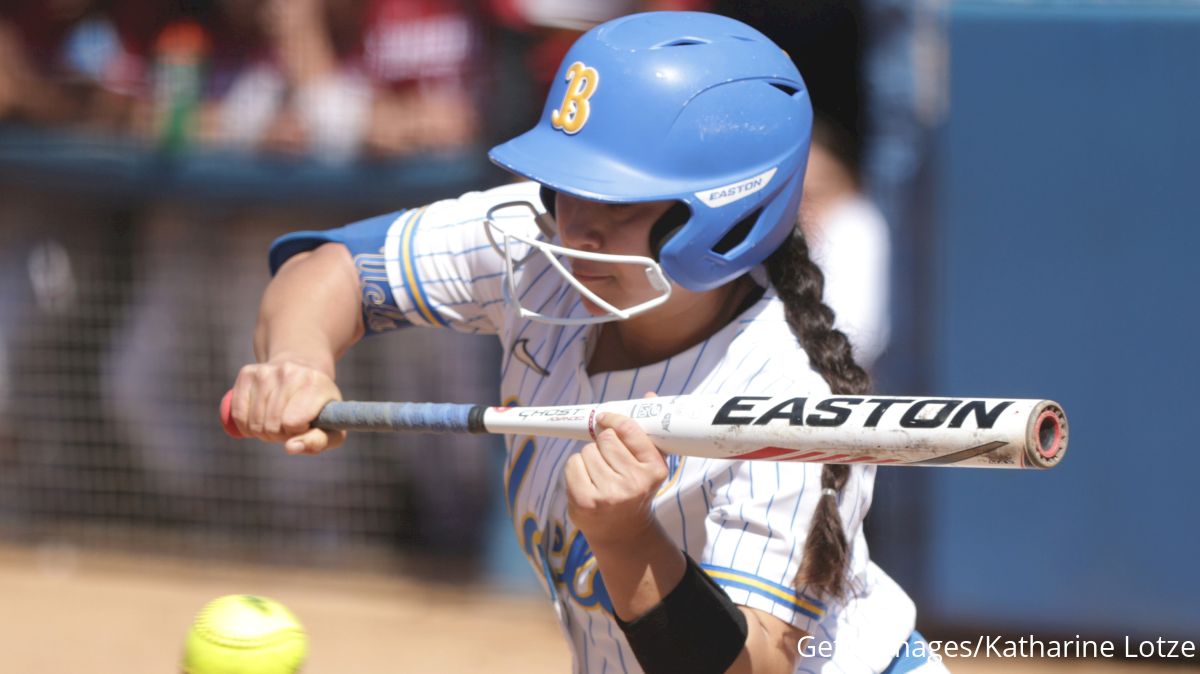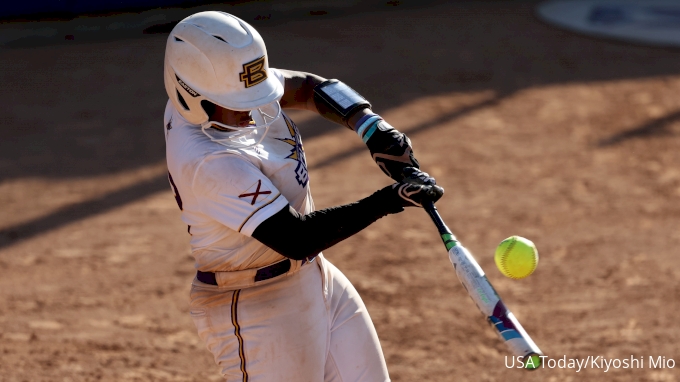What Type Of Softball Bat Should I Buy?
What Type Of Softball Bat Should I Buy?
To the naked eye, softball bats may look like carbon copies of one another, just with different paint schemes. But that couldn’t be further from the truth.

To the naked eye, softball bats may look like carbon copies of one another, just with different paint schemes. But that couldn’t be further from the truth.
No two softball bats are exactly alike, and the type of bat (and material it’s made out of) could make for a drastic difference in a batter’s performances in a game.
But with those subtle differences you get from bat to bat, there are more options available to choose from than ever, and there’s a bat out there that’s fine-tuned for every type of softball player.
The problem is, especially if you’re new to the sport, where do you start?
With many brands and styles of bats, it all can get confusing, particularly if you’re purchasing a bat for the very first time.
FloSoftball is here to help get you through the maze and select an option that’s best for you or your child’s needs, ensuring that you’ll/they’ll be able to have a trusty stick they can bring to the batter’s box with confidence.
Here’s a handy guide to softball bats, including the types of materials they’re made from, how long you can expect a bat to last and other important factors that should go into the decision of what bat to purchase.
What Types Of Softball Bats Are Available For Purchase?
Purchasing a softball bat – at least if you’re looking for one that’s tailored to your skillset and specifications – isn’t quite as simple as just going to your local sporting goods store and picking one out.
Different types for different types of players are available. It also depends on what type of softball you’re playing, your age and a variety of other factors.
Aluminum and composite materials are the most common types of frameworks for softball bats and are the types of bats you’re most likely to find while out on the town.
There also are one-piece and two-piece bats (a single solid piece of metal vs. a two-part barrel and handle setup) that may be tailored to different types of hitters, often with contact-based and power hitters for each bat style, respectively.
Rarer types of bats, such as wooden bats, do exist, but for most hitters, aluminum or composite is the bat style of choice, and for good reason, as each type offers a reliable swing that can deliver results.

What Size Softball Bat Should I Be Looking For?
This question’s answer depends on two factors – if you’re playing fast-pitch or slow-pitch, and how old you are.
The most important part of a bat’s size you may hear about when choosing one to purchase, however, is the weight drop, or the difference between the bat’s length and weight.
A lower weight drop means the bat will feel heavier, and a good rule of thumb is that the older the age of the hitter, the lower the drop weight should be, as someone who grows older naturally will grow in strength, too (bat charts are available online for those wondering which weight drop is right for you or your child).
Slow-pitch bats also tend to be heavier and have larger barrels than fast-pitch ones, but ensure before you purchase a bat and use it in competition that it’s approved by the Amateur Softball Association (ASA), whose rulebook most leagues below the elite levels of the sport (college/professional) abide by.
If your bat is ASA approved, you’ll probably be good to go in most situations, but do check with the league you’re looking to play in and make sure, just in case.
Do Different Softball Bats Offer Different Levels Of Performance?
For the sake of this article, we’ll only be comparing and contrasting the two most common types of bats you’ll see on a softball diamond: aluminum and composite.
For starters, aluminum bats (sometimes called alloy bats) are in most cases cheaper than composite, and many major bat brands sell alloy bats for a fraction of the cost of their composite models, giving families a wallet-friendly bat option.
It’s a good choice for players/families on a budget, especially those who are starting to learn the game and seeing if they like it, before diving into additional gear costs, which can add up quickly.
Plus, there is no need to break in an aluminum bat. You could purchase one at 5 p.m. and bring it up to the plate during a game at 6 p.m. and have no problems doing so.
On the other hand, composite bats, though more expensive, offer top-of-the-line performance that is unequaled by any alloy bat, and are the option preferred by most high-level players for its larger sweet spot and elite technology that delivers results on the diamond.
It’ll take some time for a composite bat to be broken in – maybe a couple hundred swings off of the tee – but if you can afford it and get through the initial work to use it in game, it might just be worth it.
It was only right for the 𝐂𝐚𝐩𝐭𝐚𝐢𝐧 🥹 @grace_lyons5
— Oklahoma Softball (@OU_Softball) June 9, 2023
T5 | OU 2, FSU 1 | 📺 ESPN pic.twitter.com/gsLMibc2hr
How Much Use Should I Expect Out Of A Softball Bat?
It’s impossible to predict exactly how much use you’ll get out of a softball bat, though both aluminum and composite bats generally are usable in games for 2-4 years, or more, depending on use, care and a variety of other factors.
To help extend the lifespan of your bat, start by looking at the materials your bat is made of before you buy, and acknowledge which type fits in your budget, while also getting the most bang for your buck.
More expensive bats do tend to be made out of stronger framework, making them more durable for a variety of situations and a longer amount of time, but it definitely is possible to get multiple seasons of use out of a bat at a cheaper price.
Once you have a bat, keep it in a cool, dry place when not in use to avoid sunlight and/or extreme temperatures affecting the bat over time; cold and hot weather can cause bats to warp, dent, crack and/or become brittle, damaging them.
Check your bat frequently for damage, and if you see signs that the bat isn’t in good working order, stop using it and look at getting it repaired or replaced before you go out to the field again.
What Softball Bat Is Right For Me Or My Child?
There’s a different answer for every type of softball player, but ultimately, skill level, age and budget are the most important factors in determining a bat that’s best for every batter.
If you or your child (especially at younger ages) are just getting into the game of softball and exploring whether or not you/they enjoy it – or you’re just playing for fun in a recreational league – an aluminum alloy bat probably is best for you due its immediate readiness, value for money and general ease of use.

If you or your child is taking the game more seriously and playing frequently, such as with a travel team, high school or college team, composite most often is the right choice for more advanced players who are trying to get the most performance possible out of their bats and maximize their opportunities on a softball diamond.
Also, explore the one-piece and two-piece bat styles while you’re shopping around for a new bat, as different types of hitters may prefer different bat designs. It ultimately is about getting the results you want from your time in the batter’s box.
Regardless of what options you choose in a bat that’s right for you or your child, high levels of production are possible with all bats at all levels. It’s just about which type of bat will help you or your child do that more often.